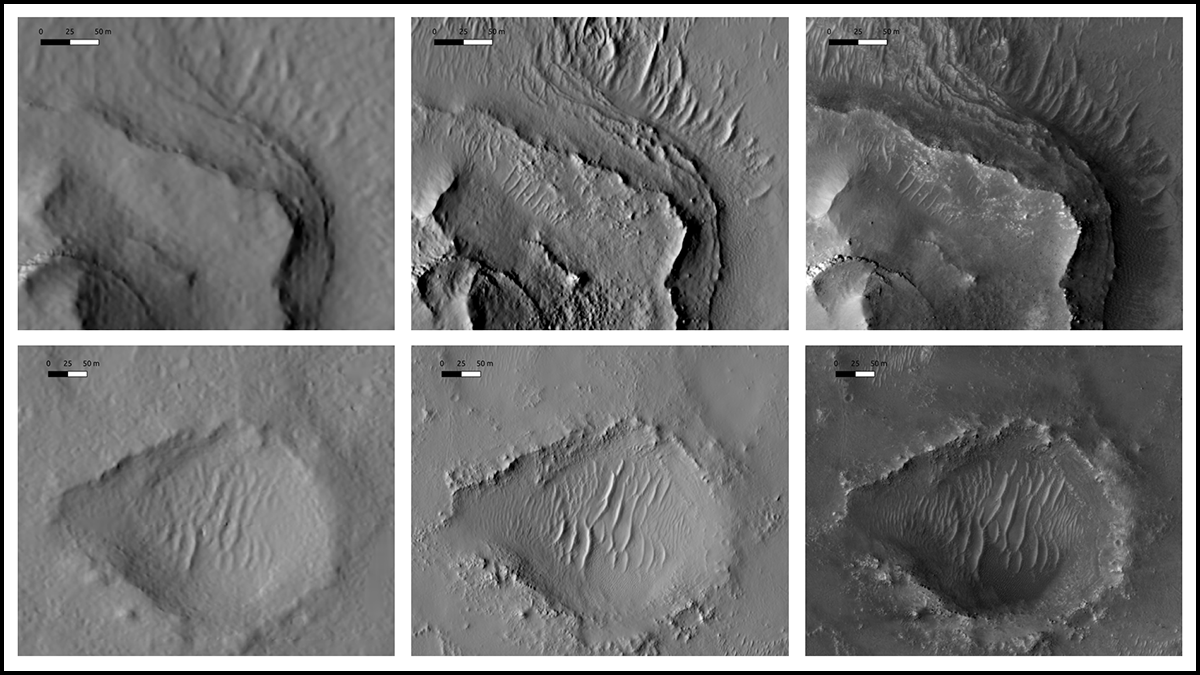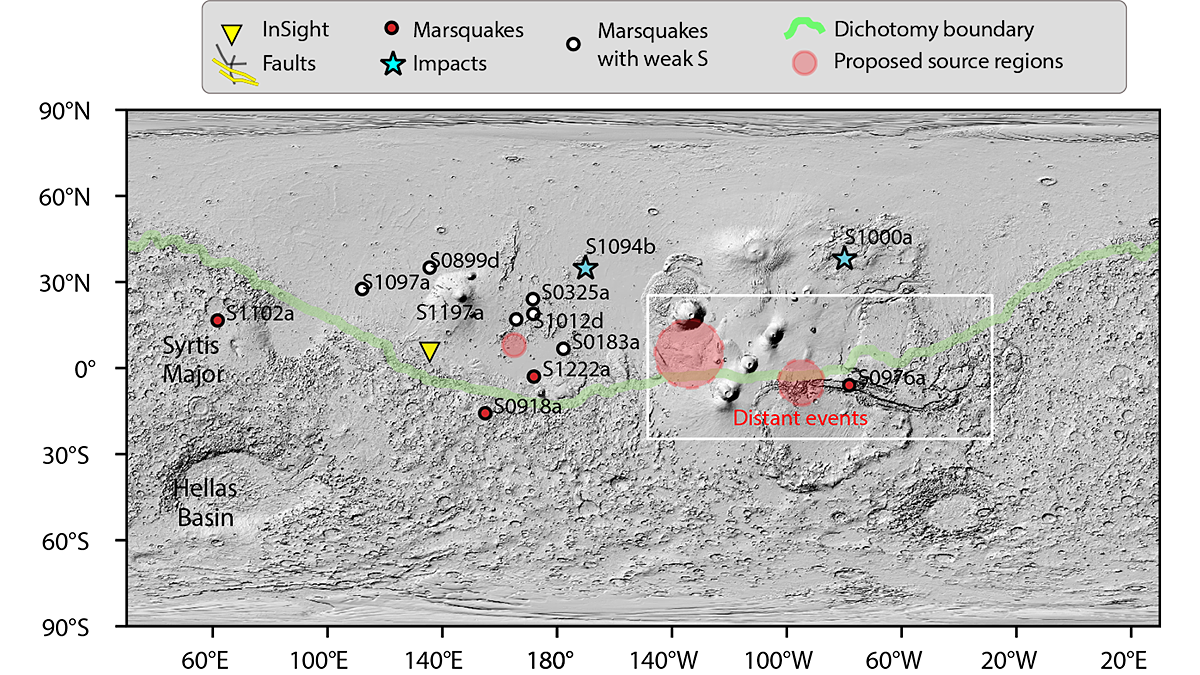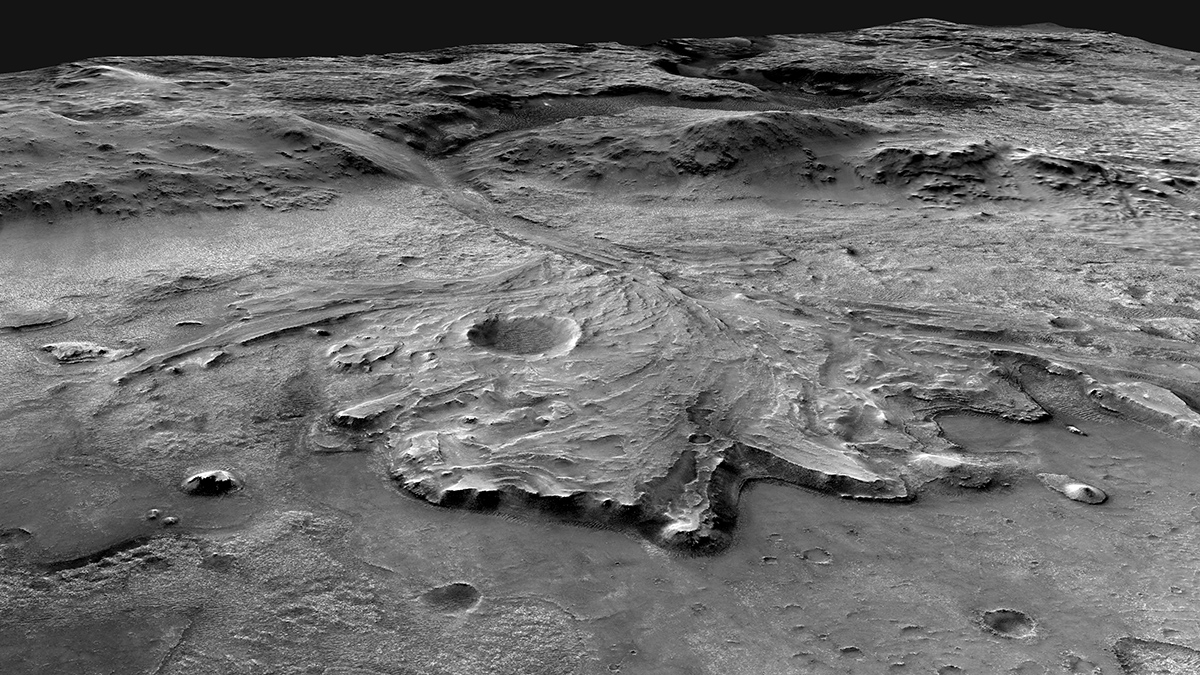An analysis of breaks in deep-sea sediment links the geological record to a 2.4-million-year cycle that heats Earth and ventilates our oceans.
Mars
Microbe Goo Could Help Guide the Search for Life on Mars
Sticky substances secreted by microbes may help create landforms on Earth. And new research shows that these substances are more preserved in iron-rich sediment. Mars is decidedly iron-rich (it’s the Red Planet, after all), so the new study adds to evidence that microbe goo could help researchers explain landform creation there. “I think this is […]
Mapping Mars: Deep Learning Could Help Identify Jezero Crater Landing Site
Researchers used new techniques to more precisely estimate ground elevations on Mars, producing a refined resolution map for rover landings.
Mars’s Interior May Have an Extra Layer of Molten Rock
New findings suggest that unlike in Earth, the bottom of Mars’s mantle is a sea of molten silicate rock.
Five Martian Mysteries That Have Scientists Scratching Their Heads
Despite centuries of study and many spacecraft visits, the Red Planet still holds secrets. Here are just a few.
Where the Wild Marsquakes Are
A new analysis of the seismic data gathered by the InSight lander reveals that marsquakes occur across a much larger area of the planet than previously believed.
Ancient Mars May Have Had a Cyclical Climate
Hexagonal structures in sediments are evidence of repeated wet and dry conditions on the Red Planet.
Optimizing Carbonate Classification on Mars
Combining data from several of the Perseverance rover’s spectroscopic sensors offers a more accurate means to classify carbonate minerals that may hold hints of ancient life.
Mars Has Far Fewer Minerals Than Earth Does
The development of plate tectonics and life on Earth provided avenues for mineral evolution that did not occur on Mars, resulting in relatively limited mineral diversity on the Red Planet.










